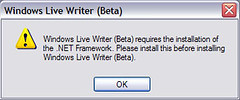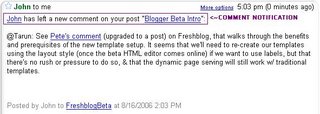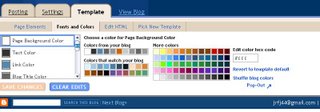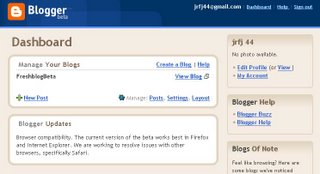
& within days, as promised... excellent. I noticed a couple of new help files this morning, and then the editor itself...
There's plenty of discussion and help out there already. The big change seems to be as expected, that your hand-coding will have to be layouts compliant and that each new element of the page will have to be defined by its own widget. See the new and growing help pages.
For more, see
Update: As he points out in the comments, Scott at Banana Stew has authored a template walkthrough that provides a great launch point as we all embark on learning this new template language. Great work, Scott!
Filed in: blogger blogger-hacks blogtech search google beta





















